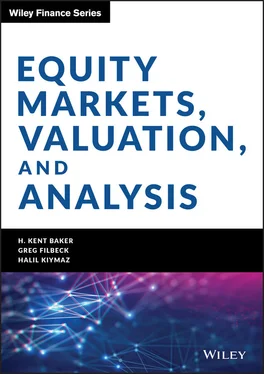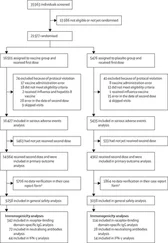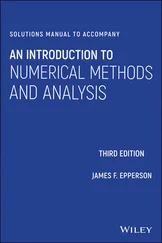Computer software providers, such as SMARTS Group, Inc., had provided software to over 50 exchanges around the world before being acquired by NASDAQ in 2010. Such software customizes its system to manage the type of alerts provided to surveillance staff. Such customization is necessary as each exchange or securities commission around the world differs in scope and requirements for surveillance. The set of alerts in conjunction with manipulative practices depicted in Cumming et al. (2011) is comprehensive for most surveillance systems. These alerts apply to both single-market manipulations and cross-market manipulations. Cross-market surveillance refers to surveillance across different products, such as equity and a related option on the same underlying equity, and across markets or different exchanges or different countries. Cross-market surveillance is much more technical to perform and execute in terms of computing power.
Moreover, cross-market surveillance requires information-sharing agreements across exchanges. Cumming and Johan (2008) present evidence from 25 markets around the world, showing that many exchanges in Europe did not have effective market surveillance at the time of the national implementation of MAD. However, such surveillance was in place around the time of MiFID. As such, Cumming and Johan (2019) are highly critical of derivative work (Christensen et al. 2016) that replicates earlier studies of the impact of market trading rules on market liquidity (Cumming et al. 2011) using MAD adoption dates and not MiFID adoption dates.
The effectiveness of the surveillance systems in different jurisdictions around the world depends on various factors (Cumming and Johan 2008).
Alerts should minimize false positives and maximize true positive manipulative practices. To be able to do this, the surveillance system needs to ascertain normal trading activity to set the abnormal alert parameters. For example, normal price and volume measures need to be set for typical trading ranges for a particular exchange-traded product.
A surveillance department should be able to reconstruct all trading activity to replay the full order/quote schedule. Market surveillance should also identify the activity of each market participant.
The surveillance staff should be versed on the issues that need to be investigated. A surveillance system's quality depends on the quality of the software used and the degree to which the surveillance staff are educated and trained on using the information provided in the alerts.
The effectiveness of a surveillance system also depends on the degree to which market participants are informed about the surveillance activities.
For cross-market surveillance, surveillance effectiveness depends to a large degree on the extent to which information is shared across jurisdictions.
The efficiency of the surveillance system depends on the regulatory framework. In many jurisdictions around the world, the exchanges themselves are self-regulatory organizations (SROs) that establish their own listing standards and monitor and discipline market participants for violation of their rules of operation. In other jurisdictions, the securities commission has a greater role in setting listing standards and trading rules.
Cumming, Groh, and Johan (2018) examine enforcement cases that involve detected market abuse, not actual (unobserved) fraud or suspected market abuse. They present data that suggest massive differences in enforcement despite similar rules across European countries. They also show that the data are consistent with the view that countries with more capital market activity are more likely to detect market abuse. Similarly, the data highlight that the legal quality in a country, with respect to the protection of shareholders and lenders, mitigates infringement activity. Also, the data suggest that enforcement authorities are more vigorous in detecting and reporting fraud when minimum pecuniary fines are higher.
Cumming et al. (2018) offer several policy implications based on their analyses. Legal enforcement of market abuse comes in three primary forms: (1) direct expenditures on enforcement officers, (2) quality of surveillance through information sharing and cooperation, and (3) rules pertaining to deterrence. Their data show that each of these three mechanisms is extremely important for detecting and deterring fraud. Expenditures on enforcement officers, surveillance, and enforcement rules are effective mechanisms to fight fraud in financial markets and to increase investor confidence in the existence of sound capital markets.
IMPACT OF TRADING RULES AND SURVEILLANCE ON CORPORATE OUTCOMES
Market manipulation rules, surveillance, and enforcement can have implications that extend beyond market efficiency outcomes, such as liquidity. This section provides a brief discussion of two examples of the effect of trading manipulation on corporate outcomes: mergers and acquisitions (M&As) and innovation.
Market Manipulation and M&As
Cumming, Ji, Johan, and Tarsalewska (2019) consider the possibility that stocks are manipulated before M&As to influence the likelihood of, and the terms of, an M&A transaction. End-of-day (EOD) prices, for example, can influence the price at which acquisition occurs. Cumming et al. (2019) examine M&As from over 45 countries between 2003 and 2014 and show that the presence of EOD target price manipulation before M&As increases the probability of an M&A deal withdrawal, and decreases the premium paid. More detailed exchange-trading rules that govern manipulation across countries and over time lower the probability of withdrawal mitigate the negative impact of EOD manipulation on withdrawal and raise premiums paid. Finally, they show that although fewer cases of acquirer price manipulations occur before M&As, acquirer price manipulation in share M&As also increases the probability of deal withdrawal.
Market Manipulation and Innovation
Cumming, Ji, Peter, and Tarsalewska (2018) examine EOD price manipulation in relation to patent activity. They contend that EOD manipulation gives rise to short-termism in managerial planning, which is inconsistent with long-term value maximization. Moreover, EOD manipulation causes long-term harm to a firm's equity values, and thereby reduces incentives for employees to innovate. Insider trading, by contrast, enables innovators to achieve exacerbated profits from innovation by insider trading on the knowledge of an impending patent not yet publicly announced. Using a sample of suspected manipulation events based on intraday data for all stocks from nine countries over eight years, Cumming et al. (2018) find evidence consistent with these real impacts of market manipulation on innovation, particularly regarding EOD manipulation. They explain that their findings are not attributable to “bad” firms innovating less and manipulating more, since the average firm subjected to manipulation in the sample is more innovative during the premanipulation period. Trading rules that curtail EOD manipulation, therefore, have an additional benefit of ensuring more innovative firms in the marketplace.
This chapter focused on one type of securities regulation that is pertinent to equity markets and valuation: trading rules. It explained that the different types of trading rules are designed to curtail a wide array of different types of market abuse. It further explained that trading rules do not operate in isolation. Without computerized surveillance and not merely single-market surveillance but more importantly cross-product and cross-market surveillance, trading rules are unenforceable and, therefore, meaningless. Finally, the chapter showed that despite similarities in trading rules across some countries, large differences exist in actual enforcement that is attributable to differences in expenditures on enforcement and information sharing across exchanges.
Читать дальше












